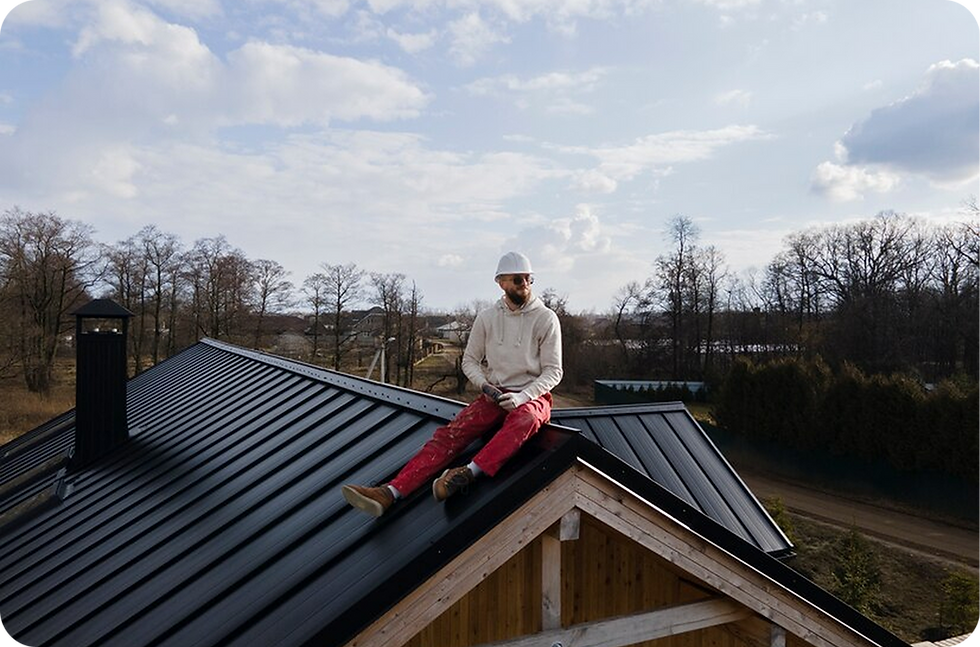Choosing the Right Roofing Material for Your Home
- Ashley Brissette
- Apr 30
- 4 min read
When thinking about home improvement, the roof can often be seen as an afterthought. However, the choice of roofing material is one of the most critical decisions you will face when building or renovating your home. The roof is your primary shield against harsh weather and plays a vital role in energy efficiency and aesthetics. With so many options available, understanding the merits and downsides of each roofing material can help you make a more informed decision.
Understanding Your Options
Before you select the right roofing material, it’s crucial to familiarize yourself with the various choices on the market. Each type has unique characteristics that can affect durability, cost, maintenance, and energy efficiency.
Asphalt Shingles
Asphalt shingles are the most popular roofing materials, especially in North America, accounting for over 70% of the residential roofing market. They are budget-friendly, easy to install, and come in a wide range of colors and styles.
The key advantage of asphalt shingles is their low cost. They usually last between 15 to 30 years, depending on the quality you choose. However, they might not be ideal in regions prone to extreme weather, as they can wear down quickly in high winds or heavy snowfall.
Metal Roofing
Metal roofing has surged in popularity due to its durability and modern look. Made from materials like steel, aluminum, or copper, metal roofs can last 40 years or more.
Their benefits are substantial; metal roofs can withstand severe weather, are resistant to rust, and can reflect sunlight, which enhances energy efficiency. Although metal roofing can be costlier upfront than asphalt shingles—ranging from $100 to $900 per square, compared to asphalt's $90 to $100 per square—it offers longevity and low maintenance, making it a smart investment over time.
Wood Shakes and Shingles
Wood shakes and shingles provide a natural look that many homeowners adore. With a lifespan of 20 to 40 years, their longevity significantly depends on maintenance and the surrounding climate.
While wood roofing can offer great insulation, it comes with higher maintenance costs and the risk of rot and insect problems. For example, in areas prone to wildfires, wood roofing is often not recommended due to its flammability.
Slate Roofing
For those seeking a premium roofing option, slate is often viewed as the best choice. Slate roofs can last over 100 years and offer exceptional durability and aesthetic appeal that increases property value.
However, the installation of slate can be expensive, often costing between $600 to $1,500 per square. Plus, it requires skilled labor for installation, making it a significant investment, but one that pays off in longevity and beauty.
Tile Roofing
Tile roofing, usually crafted from clay or concrete, is renowned for its striking appearance and longevity. It can last 50 years or more, often outlasting many other materials.
Tile roofs are also designed to be energy-efficient and resistant to rot, but their weight requires strong support during installation. This can add to overall costs and building requirements. Installing a tile roof typically ranges from $300 to $1000 per square.
Factors to Consider
Choosing the right roofing material involves more than just aesthetics and lifespan. Here are a few key factors to keep in mind:
Climate and Weather Conditions
Your local climate profoundly impacts which roofing material is best. For instance, areas with heavy snow benefit from metal roofing, which excels at shedding snow. Conversely, homes in hot climates might do better with tile or metal roofs, as they effectively reflect sunlight and reduce cooling costs.
Budget
Budget inevitably affects your choice, with asphalt shingles typically being the cheapest. While slate and tile might feel like a financial stretch, durable materials might result in long-term savings. For example, energy-efficient roofs could lower your energy bills by up to 20%.
Energy Efficiency
Many homeowners now prioritize energy efficiency. Materials like metal and tile provide excellent insulation and reflect sunlight, keeping indoor temperatures comfortable and lowering energy bills. According to studies, installing reflective roofing can lead to a 10 to 15% reduction in energy costs.
Aesthetic Appeal
Your roof contributes significantly to your home's curb appeal. Think about what materials will complement your home’s architecture. For example, a historical home may look best with slate or wood shingles, while a modern house might suit metal or tile roofing more effectively.
Longevity and Maintenance
Different roofing materials have varying lifespans and maintenance levels. Consider how much effort you are willing to put into upkeep. For example, wood requires more care than metal, which can be more hands-off.
Making the Final Decision
Once you have assessed your options and considered essential factors, it’s time to decide. Here are steps to guide you:
Consult with Professionals: Talk to roofing experts who can provide tailored advice based on your home’s location and structure.
Request Samples: If possible, see samples of materials you are considering. This practical approach helps you visualize how your chosen roof will look.
Weigh Pros and Cons: Listing the advantages and disadvantages of each roofing material can clarify your decision-making process.
Budget for the Future: Evaluate not just your upfront costs but also potential savings. Energy-efficient roofing might require a higher initial investment but can lower monthly bills.
Plan for Installation: Choose an experienced roofing contractor to ensure proper installation of your selected material.
Final Thoughts
Choosing the right roofing material for your home is a significant and impactful decision. By understanding your options and carefully evaluating factors like climate, budget, and aesthetic appeal, you can make an informed choice.
Investing time in research will enhance your home's beauty and ensure it stays durable and efficient for years to come. A well-chosen roof not only protects your living space but also contributes to your comfort and peace of mind.





Comments